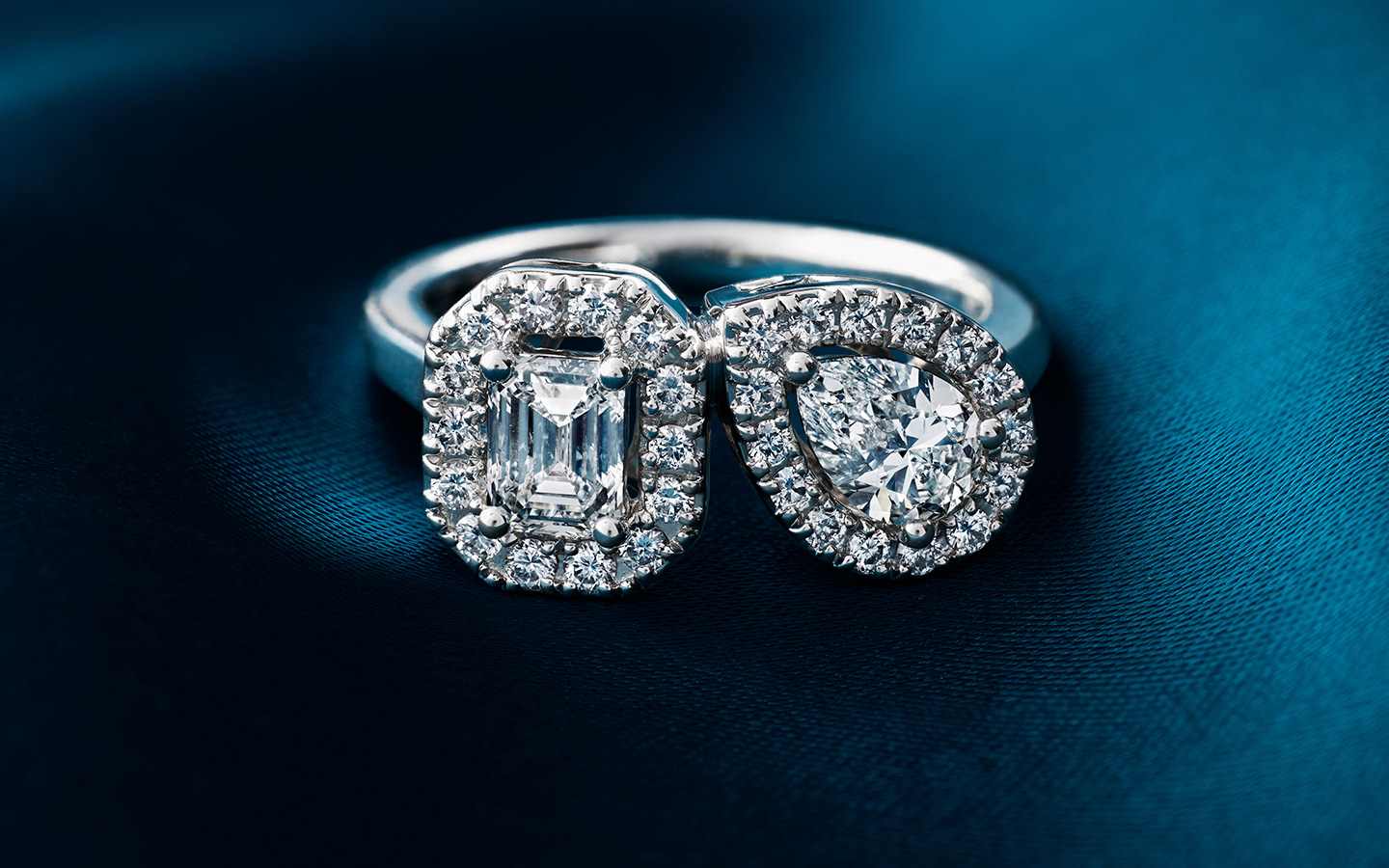The magical brilliance of diamonds has cemented these gems as the go-to stone for engagement rings, wedding rings and other fine jewelry. With impressive light performance and incredible durability, both natural and lab grown diamonds are popular choices for heirloom-quality necklaces, earrings, bracelets, and rings.
There’s a lot of information to consider when you’re shopping for diamonds, and cut is one of the 4Cs to keep in mind. Diamond cut assesses how well-proportioned a diamond is by looking at several factors including the stone’s facets. Every diamond has facets, they’re the small flat polished surfaces spread throughout a diamond that help it sparkle or glow.

A diamond’s faceting style doesn’t just influence its cut grade. The arrangement, angle, depth, and shape of a diamond’s facets can also influence how that diamond reflects or absorbs light.
Today’s most popular diamond cuts fall into one of two faceting categories: brilliant cut or step-cut. There are stylistic and technical differences between these two cut types that bring unique beauty to each.
So, what do these two different diamond cut styles look like? The differences are most apparent if you look at two differently cut diamonds next to each other.
When you look at an emerald cut diamond next to a round brilliant diamond, there are several differences you’ll see. First, the two gems have different diamond shapes. But you’ll also notice that there’s a difference between how the two diamonds interact with light. The emerald diamond may glow, while the round diamond usually has sparkle and fire. These differences are because of the unique faceting each diamond shape has.

If you’re shopping for diamonds or diamond jewelry, you may be wondering which is best: step-cut or brilliant diamonds. The best diamond cut type is the one that matches your budget and style. Keep reading our guide to diamond cut styles to learn more about both brilliant cut diamonds and step-cut diamonds to help you decide which is your best choice.
Brilliant Cut Diamonds

Sparkling brilliant cut diamonds are the most popular styles we offer at texas. They’re identified by their numerous facets and often conical shape that provides the best light performance. It is the widest of the two categories, with 8 different diamond shapes including:
- Round diamonds
- Princess diamonds
- Cushion diamonds
- Oval diamonds
- Pear diamonds
- Heart diamonds
- Radiant diamonds
- Marquise diamonds
Though these diamonds all have different shapes, they do share the commonality of numerous facets that make them sparkle at almost every angle. This is the signature brilliant faceting that gives these diamonds their iconic scintillation and fire. The facets in brilliant cut diamonds are usually arranged for maximum light return.
Most brilliant cut diamonds are relatively new diamond cuts. The technology needed to optimize a diamond’s cut and precisely carve its facets has only been perfected over the last few centuries. For example, the iconic round brilliant diamond in its most faceted state only dates back to 1919. The radiant diamond is even newer, dating back to 1977.

Brilliant cut diamonds encompass many styles, from vintage-inspired to modern shapes. Their impressive sparkle makes them a leading choice for women’s and men’s engagement rings, stud earrings, tennis bracelets, and wedding rings.
Step-Cut Diamonds

Glowing step-cut diamonds are uniquely beautiful, with narrow facets arranged parallel to each other in a step-like pattern on four sides. This is a smaller category, with two popular diamond shapes:
- Emerald diamondsa
- Asscher diamonds
These step-cut diamonds evoke vintage glamour with a soft glow and a “hall of mirrors” effect that’s visible in flashes of brilliance from the diamond’s facets when the light hits the stone just right. The elongated facets of step-cut diamonds are arranged to maximize the diamond’s beauty and flashes of light where possible.
Step-cut diamonds represent some of the older diamond cuts, dating back to 1902 for Asscher diamonds and all the way back to the 1500s for emerald cut diamonds. As technology has improved, these step-cuts have become more precise.





